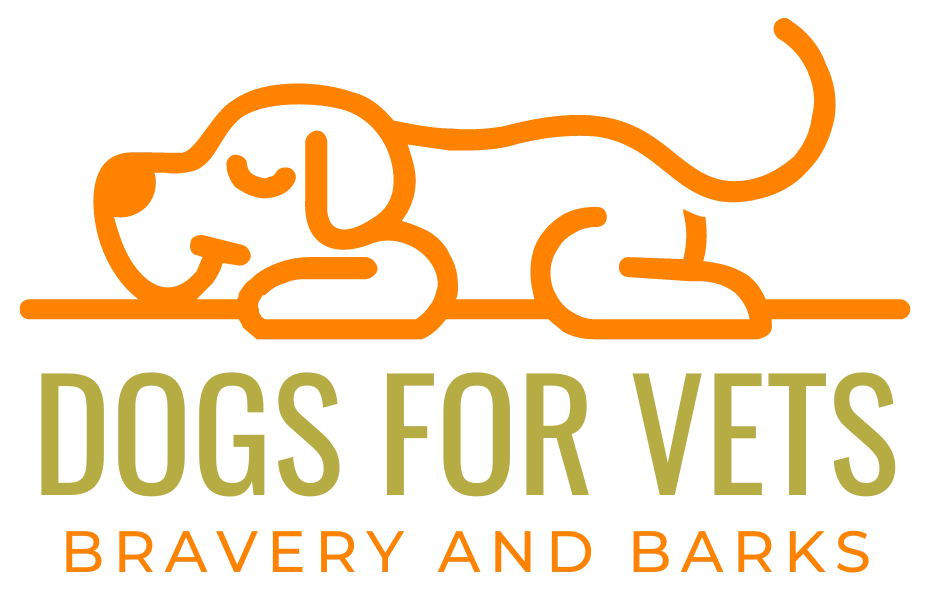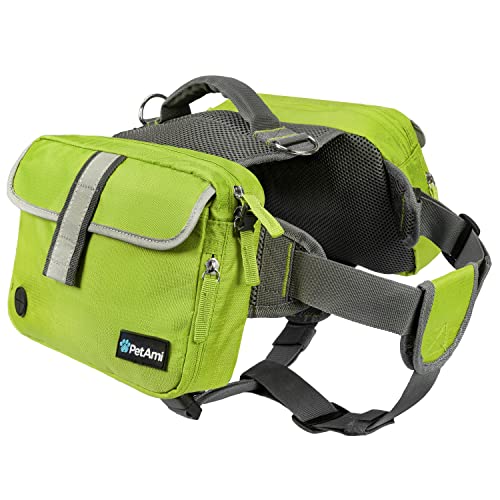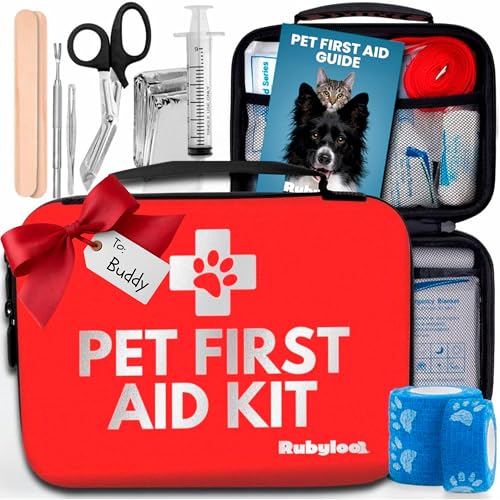This post may contain ads and affiliate links and we may earn a small commission when you click on the links at no additional cost to you. As an Amazon Affiliate, we earn from qualifying purchases. You can read our full disclaimer here.
Solo Camping with a Dog: Best Tips, Tricks, and Key Knowledge
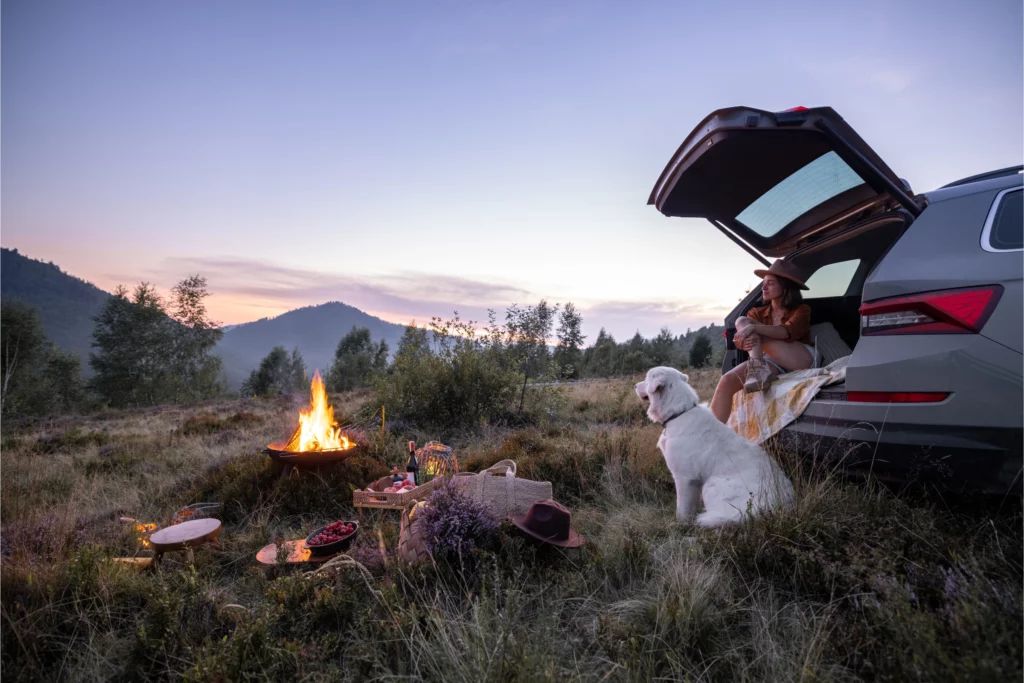
Solo camping with a dog isn’t just an adventure; it’s a journey into bonding and nature.
Imagine this: stars above, the quiet rustling of trees, a crackling campfire, and your loyal furry friend by your side.
For many, it’s an unmatched experience, a chance to disconnect from the daily grind and connect with their canine companion.
A Personal Glimpse to Solo Camping with a Dog: Age is Just a Number
Let’s take my mom, for instance. Even into her 70s, she ventured into the wilderness, tent in tow and her trusty dog leading the way.
They weren’t just out for a night. Oh no, they’d camp for weeks at a time! It goes to show, age doesn’t define adventure – passion does.
Why This Guide Matters
Whether you’re a newbie eyeing your first trip or a seasoned camper, there’s always something new to learn about solo camping with a dog.
This guide aims to equip you with knowledge, tips, and a sprinkle of personal anecdotes. We’re diving deep into preparation, gear, safety, and those little moments that make the trip worthwhile.
Preparing for Adventure: Assessing Your Dog’s Readiness for Solo Camping
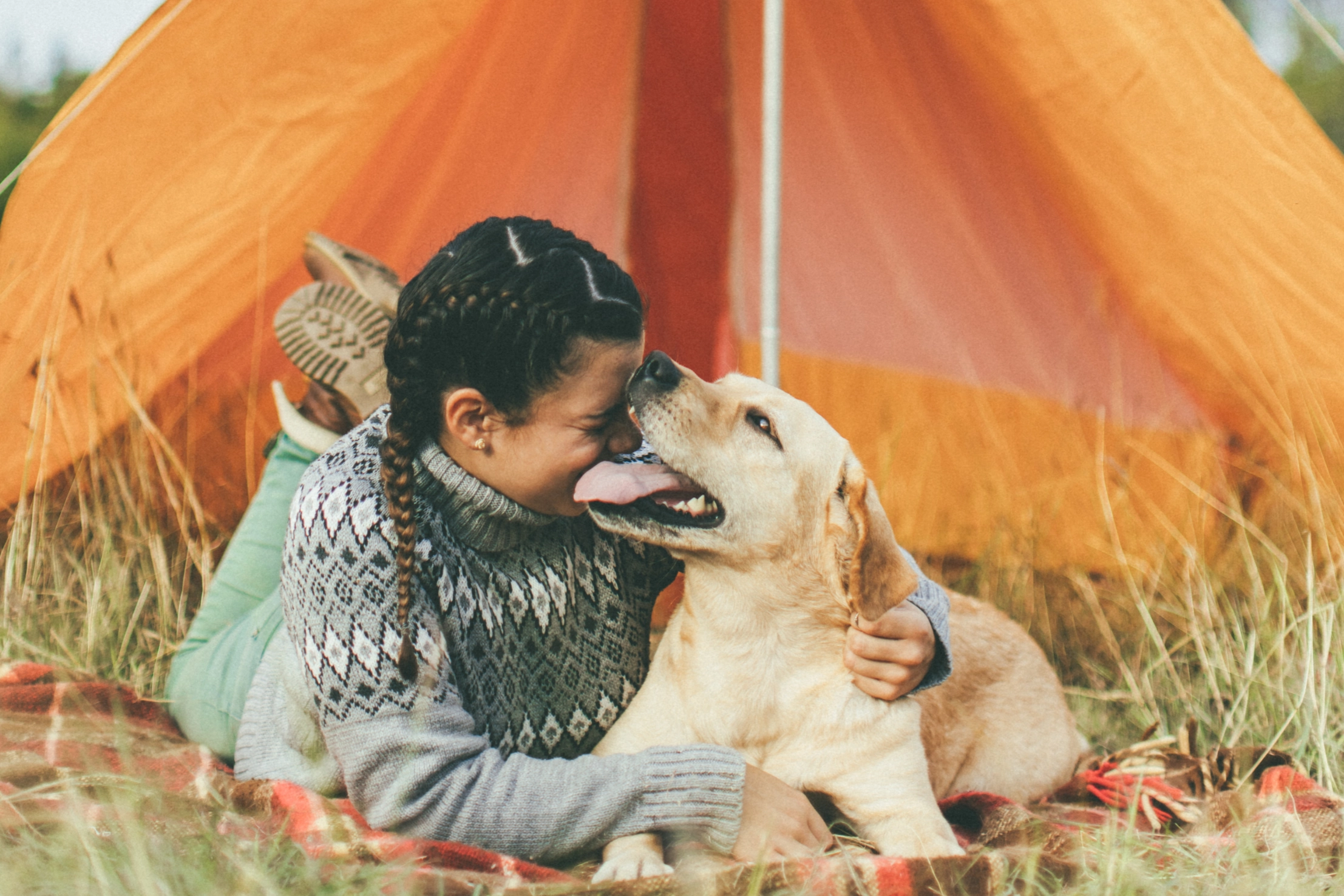
Embarking on a solo camping trip with your dog is a thrilling journey of companionship and nature exploration.
However, ensuring your canine companion is physically and mentally prepared is paramount to guaranteeing an enjoyable and safe experience for both of you.
Setting the Stage for Solo Camping with a Dog
Before you pack your bags and hit the trail, it’s vital to evaluate if your dog is fit for the journey. Just like us, every dog is unique. Some are born adventurers, while others might prefer the comfort of their bed.
Understanding Your Dog’s Physical Fitness
Fitness plays a pivotal role. A young, energetic Labrador might thrive on a hiking trail, whereas an older Dachshund might find it challenging. Think about it:
- Age: Younger dogs have more energy, but puppies might not have the stamina. Older dogs might have the spirit but check if they have the strength.
- Breed: Some breeds are natural hikers; others, not so much.
- Health: Recent vet check-up? Any ailments or conditions to consider?
Check out our other post about winter hiking with dogs!
Temperament Matters in Solo Camping with a Dog
Beyond physical fitness, temperament is crucial. A dog that’s curious but obedient is ideal. Here’s what to ponder:
- Behavior with strangers: Friendly or aggressive?
- Reaction to wildlife: Chase squirrels or calmly observe?
- Adaptability: Okay with new environments or prefers familiar settings?
The Vet Check-Up: A Non-Negotiable Step
Never underestimate the importance of a vet visit before any prolonged outing. They can offer insights you might overlook. Consider asking about:
- Vaccinations: Up-to-date, especially for outdoor risks like Lyme disease?
- Diet: Any special food or supplements for the trip?
- General check-up: Heart, joints, fur, and overall health in check?
Crafting a Training Regimen
Solo camping with a dog is smoother when they’re well-trained. Before your trip, focus on:
- Recall commands: Essential for off-leash moments.
- “Leave it” command: Useful for curious noses near potentially dangerous items.
- Night-time behavior: Ensuring they’re calm when the sun sets.
In the end, knowing your dog’s strengths and limits is essential. After all, this adventure is for both of you.
With the right prep, solo camping can be an enriching experience, bursting with memories to cherish.
Packing Right for Solo Camping with a Dog
Setting out on a camping adventure, especially with your furry friend, requires some gear essentials. Having the right equipment can make your trip more comfortable, safer, and more enjoyable.
Essential Camping Gear for the Camper
First and foremost, think about your needs as a camper. While the thrill of nature calls, being well-prepared ensures a smooth experience. Here’s a starter list for you:
- Tent: Opt for a durable, weather-resistant tent with good ventilation.
- Sleeping Bag: Depending on the season, choose a sleeping bag that offers the right warmth and comfort.
- Food Storage: Bear-proof containers or hanging bags are vital to keep your food safe and away from wildlife.
- Cooking Gear: Lightweight stoves, fuel, and utensils can make meal prep easy.
- Lighting: Headlamps and camping lanterns help navigate the night.
- Navigation Tools: Maps, compass, or GPS devices can guide you through unfamiliar terrains.
No products found.
For added enjoyment, instead of a tent, think about using a hammock when camping with your dog!
Dog-Specific Gear for a Flawless Camping Experience
Your dog’s comfort and safety are as paramount as yours. To ensure they have an enjoyable trip, pack these essentials:
- Leash/Harness: A sturdy leash and harness give you control, especially in unknown or wild areas.
- Portable Water Bowl: Hydration is key! A collapsible water bowl ensures your pup can drink anytime, anywhere.
- Dog Backpack: Let your dog carry its treats and toys. It gives them a sense of purpose!
- Dog Bed or Pad: After a long day of exploration, your dog will appreciate a cozy spot to rest.
- Dog Booties: Protect those paws! Booties shield against rough terrains, hot surfaces, and cold snow.
Size M fits most breeds like Labs and Shepherds. Crafted from tough ripstop nylon.
Specialized Gear for Extended Backpacking Adventures
Planning to venture out for a more extended period? Extended trips need a bit more preparation. Consider these additions:
- Water Filtration System: Ensures you and your pup have access to clean drinking water.
- Solar Charger: Keeps essential electronics charged, especially if you’re using GPS devices or digital maps.
- Extended First Aid Kit: Injuries can happen. An extended kit for both you and your dog can be a lifesaver.
- Durable Footwear: Both for you and your dog, especially if covering rocky or challenging terrains.
Remember, the key is to strike a balance between essentials and not overpacking. With the right gear in tow, your solo camping with a dog will not only be memorable but also hassle-free.
Ensuring Well-being During Solo Camping with a Dog
As you step into the embrace of nature, safety and health should top your priority list. Both you and your dog depend on each other in the great outdoors, so staying vigilant and informed is crucial.
Here’s a rundown on what you should keep an eye on.
Detecting Signs of Fatigue and Dehydration in Your Dog
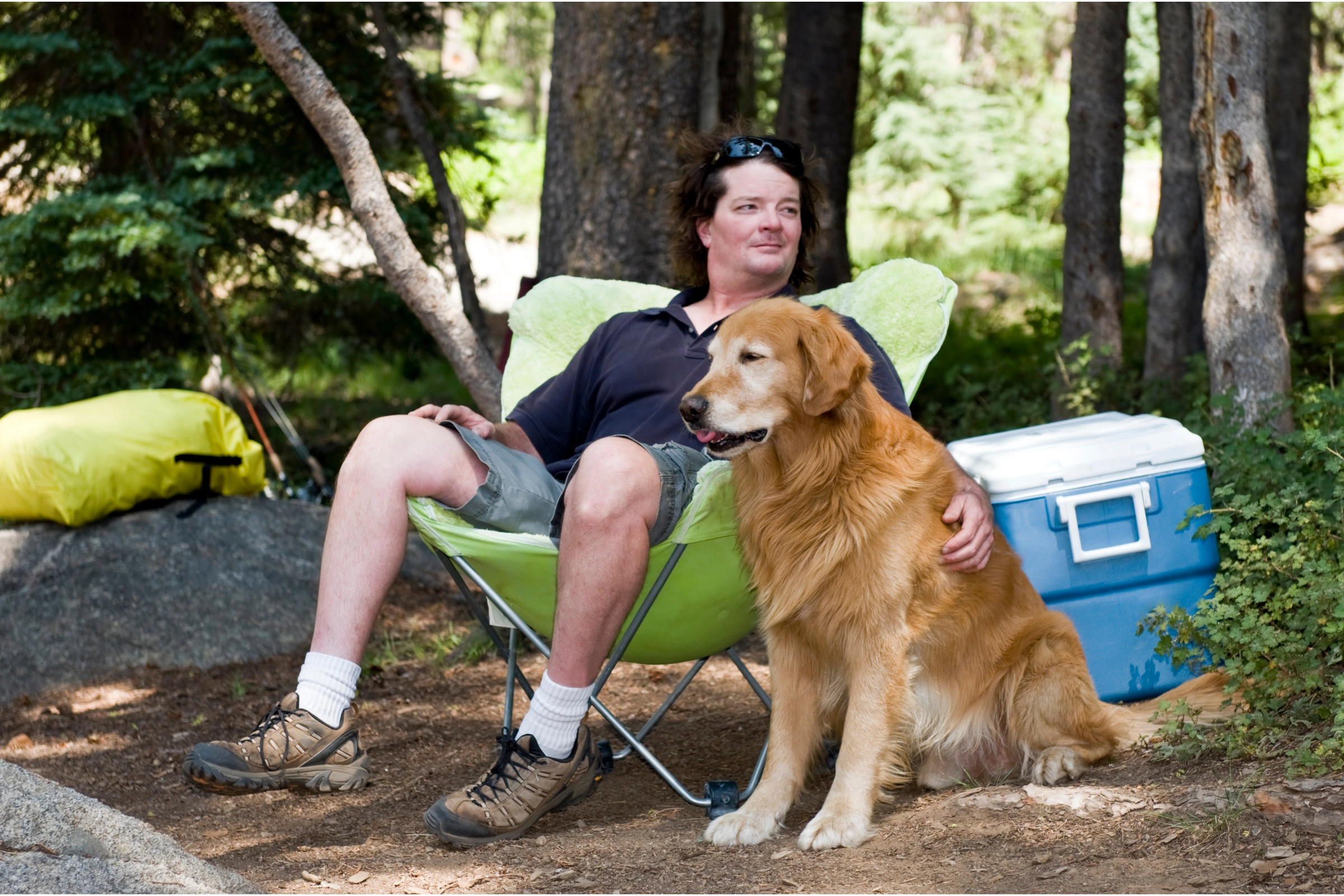
The excitement of exploring new terrains can sometimes make us forget our limits, and the same goes for our furry friends.
- Fatigue Indicators: Limping, slowing down, heavy panting, or disinterest in surroundings can all hint that your dog needs a break.
- Dehydration Red Flags: Look out for excessive panting, dry nose and gums, and reduced energy. Always ensure your dog has access to fresh water.
Doggy First-Aid Basics
Just like us, dogs can experience unexpected injuries or health issues. Being prepared can make all the difference.
- First-Aid Kit Essentials: Include bandages, antiseptic wipes, tweezers, a thermometer, and dog-safe pain relievers.
- Knowledge is Power: Familiarize yourself with basic first-aid procedures, such as cleaning wounds or handling sprains.
- Emergency Contacts: Always have the contact info for the nearest vet or animal hospital.
All housed in a sturdy, waterproof case with reflective details for easy spotting and additional space for personal items. Ideal for any emergency, including evacuations.
Potential Wilderness Dangers
Nature is beautiful, but it also has its risks. Staying informed can help you navigate these safely.
- Wildlife Encounters:
- Bears: If encountered, speak calmly and firmly. Avoid direct eye contact, and slowly back away.
- Snakes: Stay calm and back away slowly. If your dog gets bitten, seek immediate vet care.
- Other Wildlife: Always maintain a safe distance, and ensure your dog is under control and not provoking animals.
- Hazardous Plants & Elements:
- Toxic Plants: Educate yourself on plants that are harmful to dogs, such as foxgloves or certain mushrooms.
- Safe Water Sources: Avoid stagnant water sources. Use a water filtration system if unsure about the water’s purity.
Safety is a continuous process. By being proactive and informed, you can ensure that your solo camping experience with your dog remains a joyful memory, free from unforeseen mishaps.
Cultivating Good Behavior and Etiquette for Solo Camping with a Dog
Journeying outdoors with your dog is an adventure, but ensuring that your canine companion is well-behaved and considerate can amplify the experience for everyone involved.
Proper etiquette and training are cornerstones for any successful camping trip. Let’s delve into how to cultivate these skills.
The Importance of Pre-Trip Training
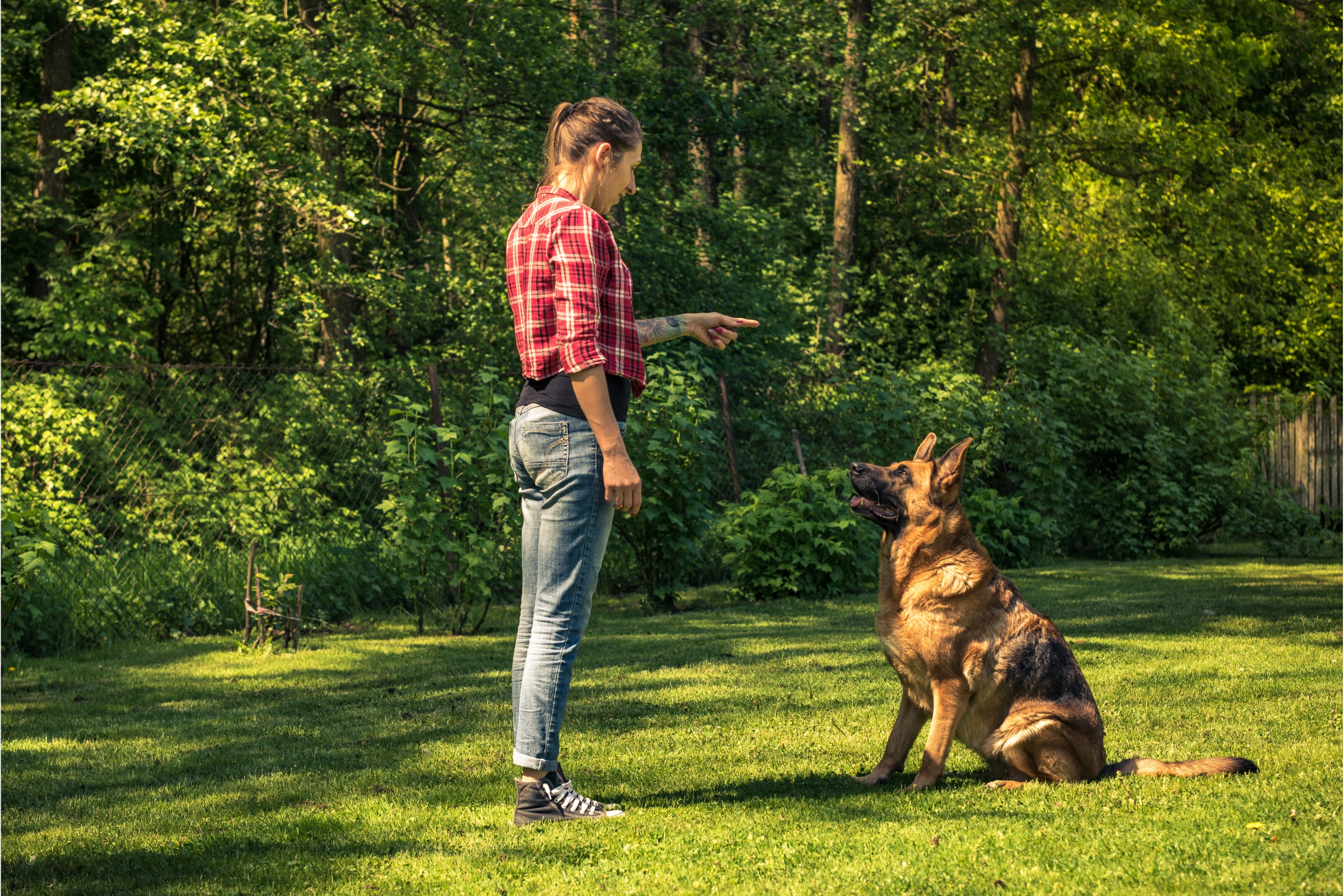
Starting your training well before your trip ensures that your dog is ready for the challenges and distractions of the outdoors.
- “Leave it” Command: Super useful for preventing your dog from picking up or eating something they shouldn’t.
- “Stay” Command: Essential for moments when you need your dog to remain in a specific place, especially in unfamiliar terrains or near cliffs.
- Recall Training: Perhaps the most vital. Your dog should come to you immediately when called, especially if they’re off-leash.
Curbing Excessive Barking
A quiet campsite is a joy for everyone. Here’s how to ensure your dog contributes to the serenity:
- Understand the Cause: Is your dog barking out of fear, excitement, or territoriality? Address the root cause.
- Training: Use commands like “quiet” or “enough” and reward quiet behavior.
- Night-time Calm: Ensure your dog is comfortable and secure in the tent, reducing the chances of night barks.
Fostering Respectful Behavior Around Wildlife and Fellow Campers
The great outdoors is shared space. Teaching your dog to be respectful ensures a harmonious experience for all.
- Wildlife Encounters: Train your dog not to chase after animals. A solid “stay” or “come” command can prevent potential dangers.
- Meeting Other Campers: Socialize your dog with various people and other dogs before the trip, so they remain calm during new encounters.
- Aggressive Behaviors: Recognize signs of agitation and have techniques ready to calm your dog down, be it a soothing voice or a distraction.
In essence, the goal is to have a dog that’s not just a companion but a respectful camper. By investing time in proper etiquette and training, your solo camping with a dog can be an experience that’s memorable for all the right reasons.
Navigating Camping Regulations, Rules, and Etiquette in Solo Camping with a Dog
Camping offers a delightful escape into nature, but it’s essential to remember that these outdoor spaces often come with rules and regulations. Adhering to these guidelines ensures that nature remains pristine for everyone to enjoy.
Let’s take a closer look at some general regulations when it comes to camping with your dog.
Grasping Leash Laws in Camping Areas
While you might want to let your furry friend roam free, leash laws are in place for several reasons, from protecting wildlife to ensuring the safety of other campers.
- Strict Leash Areas: In many parks and campgrounds, dogs are required to be on a leash at all times, typically no longer than six feet.
- Benefits: This control reduces the chance of unexpected wildlife encounters and ensures minimal disturbance to fellow campers.
Recognizing Dog-Restricted and Dog-Friendly Zones
Not all places are open to our canine companions. It’s essential to be informed and respect these boundaries.
- Dog-Restricted Areas: Some trails, beaches, or specific zones in parks may be off-limits to dogs due to concerns about wildlife disturbance or plant conservation.
- Dog-Friendly Zones: Conversely, certain areas might be designated as off-leash zones, where dogs can roam free under the owner’s supervision. Always ensure your dog is well-behaved in these spaces.
The Imperative of Cleaning Up After Your Dog
Leaving no trace is a cardinal rule of camping, and this extends to our pets.
- Waste Management: Always carry biodegradable poop bags to pick up after your dog. Dispose of them in designated waste bins or pack them out if no disposal options are available.
- Environmental Concern: Dog waste can harm local ecosystems by introducing non-native bacteria and nutrients. It also impacts the experience of future campers.
- Water Preservation: Prevent dogs from relieving themselves near streams or lakes to preserve water quality.
Being a responsible camper is a collective effort. As you embark on solo camping with a dog, familiarizing yourself with these regulations and practicing them ensures that the beauty and serenity of nature remain intact for everyone.
Crafting Comfort and Structure in Solo Camping with a Dog
Being in the wilderness is an exciting departure from our daily lives, but establishing some semblance of routine can provide comfort, especially for our canine friends.
Building a familiar rhythm amidst the unfamiliarity can make your camping experience smooth and enjoyable for both you and your dog.
Here’s how you can bring a touch of home to the wild.
Setting Up Camp Strategically
The foundation of your camping experience is where and how you set up your camp.
- Safe Spot Selection: Look for level ground, away from cliff edges or rapidly flowing water. Consider factors like rising water or potential falling branches.
- Dog’s Sleeping Area: Designate a cozy, sheltered space for your dog close to your tent. This can be a specific mat, blanket, or a portable dog bed. Being close helps them feel secure and wards off potential nocturnal critters.
Crafting a Day-to-Day Routine
Dogs thrive on routine. The predictability can be reassuring, even in a new environment.
- Regular Meal Times: Maintain similar feeding times as you would at home. This consistency can help keep their digestive systems regular.
- Exploring Times: Dedicate specific parts of the day for hikes or exploration. This allows your dog to anticipate and be energized for these activities.
- Rest Times: Ensure you have quiet moments or naps, especially during the hottest parts of the day, to recharge and avoid exhaustion.
Defining Campsite Boundaries
Just as at home, it’s essential your dog knows where they can and cannot go in the campsite.
- Training: Use commands like “stay” or “no” when they approach the campsite’s limits.
- Physical Boundaries: Consider using a lightweight, portable fence or a long leash to define a safe play and rest area for your dog.
- Reiteration: Consistently reinforce these boundaries during the initial days to ensure they’re well-understood.
Incorporating elements of routine doesn’t mean compromising on the adventure. Instead, it ensures that amidst the thrill and unpredictability of the wild, there’s a comforting rhythm for your dog, making solo camping with a dog feel just like another day in paradise.
Embracing Adventures, Activities, and Bonding in Solo Camping with a Dog
Every camping journey is replete with opportunities for adventure, bonding, and memory-making. It’s the shared experiences, from exhilarating hikes to quiet moments under the stars, that truly deepen the bond between you and your canine companion.
Engaging Activities to Share with Your Dog
The wilderness offers a vast playground for both humans and dogs alike.
- Hiking: Choose dog-friendly trails that match your dog’s endurance and curiosity. Don’t forget to pack essentials like water and snacks for both.
- Fetch: A clear campsite or open meadow can be the perfect spot for a game of fetch, allowing your dog to expend energy and enjoy playtime.
- Exploring: Simply wandering and letting your dog sniff around can be an exciting activity. Always stay close and watchful.
- Swimming: If you’re camping near a body of water, and your dog enjoys it, swimming can be refreshing. Ensure the area is safe and free from strong currents.
Savoring Moments of Calm and Scenery
While adventures are exhilarating, it’s equally crucial to appreciate the tranquil moments.
- Restful Breaks: Especially after an activity, find a shaded spot, lay down a blanket, and simply relax. Let your dog nap or watch the world go by.
- Enjoying the Scenery: Whether it’s a beautiful sunrise or a starry night, sharing these serene moments with your dog can be deeply fulfilling.
Documenting the Memories
The journey may be temporary, but the memories last a lifetime. Here’s how you can capture them.
- Photographing: Invest in a good camera or use your smartphone. Capture candid moments, action shots, or serene landscapes with your dog in the frame.
- Journaling: At the end of each day, jot down the day’s events, feelings, and observations. It’s a great way to reflect and appreciate the experience.
- Paw Prints: Consider having a journal page where you can imprint your dog’s muddy or wet paw after a day of adventures.
In essence, while the activities are a significant aspect of the journey, it’s the bonding and shared moments that truly define the magic of solo camping with a dog.
Every laugh, every challenge, and every quiet moment adds to the tapestry of an unforgettable experience.
Final Wrap Up of Solo Camping with a Dog
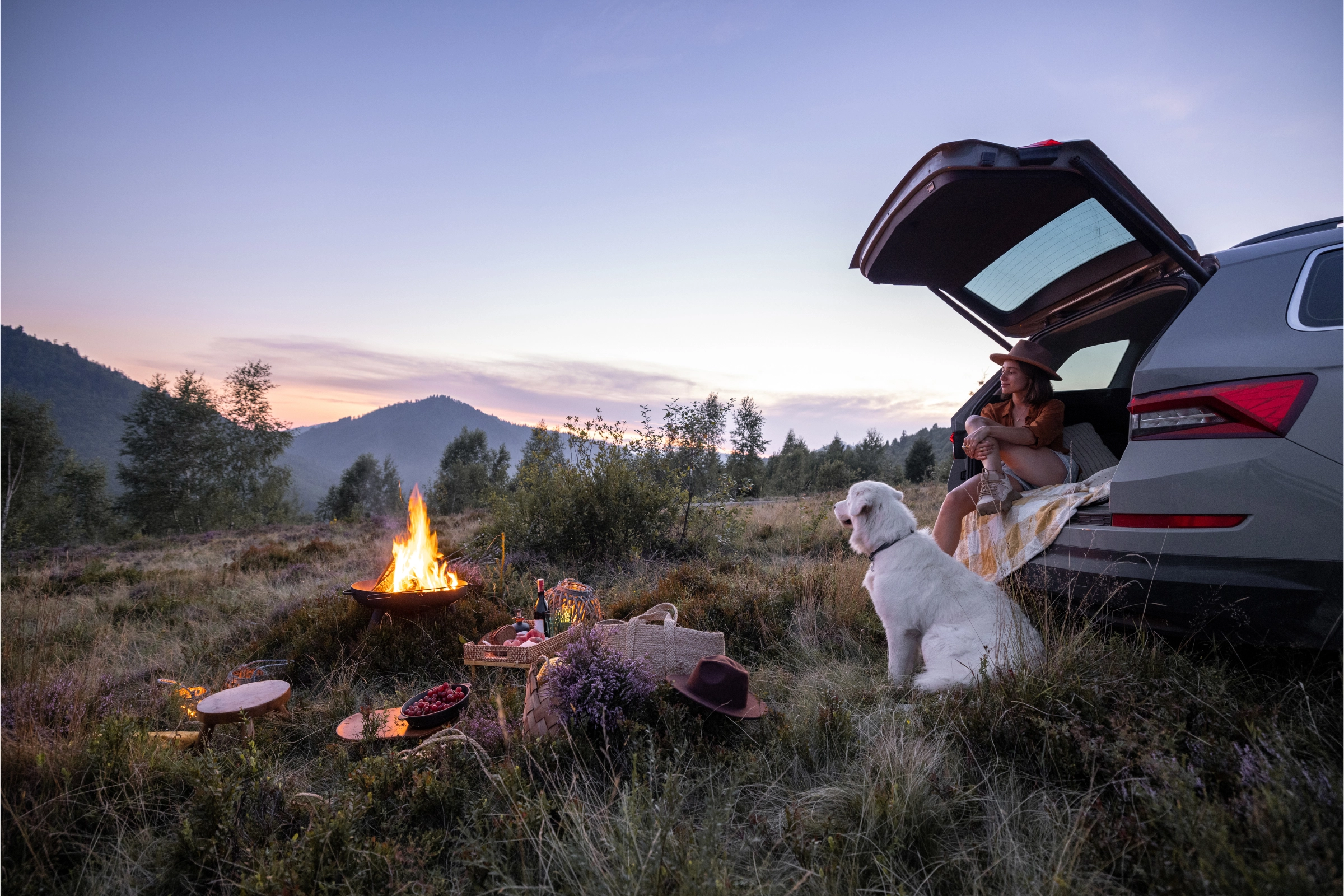
Embarking on a solo camping journey with your dog is so much more than just a trip into the wilderness; it’s an expedition into the heart of the bond you share with your canine companion.
Every trail walked, every campfire lit, and every star gazed upon deepens the connection between you and your furry friend. As you navigate the challenges, bask in the beauty, and create a symphony of memories, it becomes evident that the wilderness, vast and untamed, is but a backdrop to the narrative of companionship you’re crafting.
Whether you’re a seasoned camper or just beginning, may the stories, laughter, and shared silences of your adventures echo long after the tent is packed away.
-

Coffee Mug – In Dog Coffees I’ve Only Had One
Price range: $11.95 through $14.95 Select options This product has multiple variants. The options may be chosen on the product page
